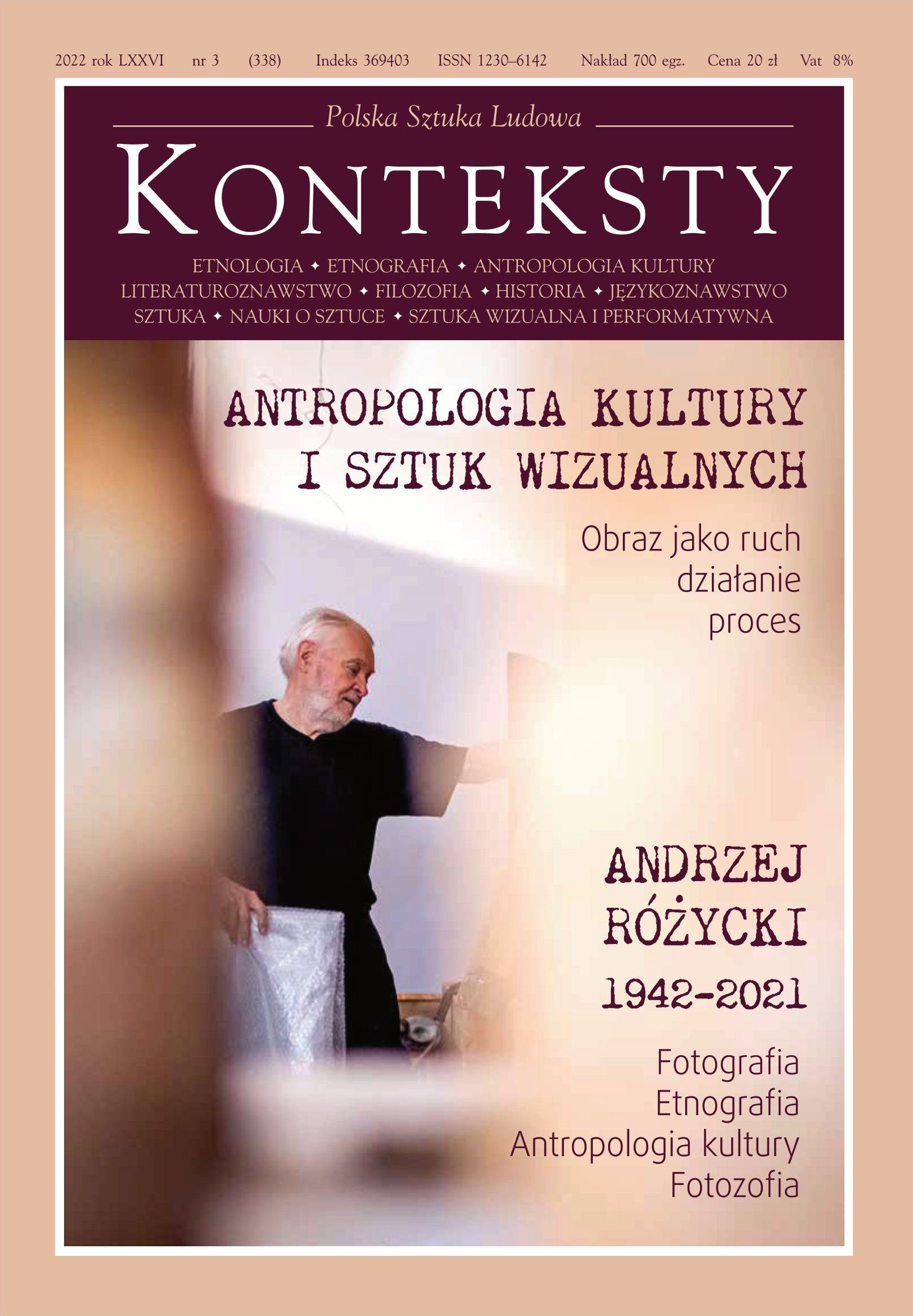Droga Anioła. Rzecz o Andrzeju Różyckim
Path of the Angel. On Andrzej Różycki
Author(s): Hubert CzachowskiSubject(s): Fine Arts / Performing Arts, Sociology of Art
Published by: Instytut Sztuki Polskiej Akademii Nauk
Keywords: Andrzej Różycki;photography;anthropology;
Summary/Abstract: A description of the exhibition: Przejęcia (Między zbieractwem a fotozofią (Import/ance/s. Between Hoarding and Photosophy) featuring works of the acclaimed Polish photographer Andrzej Różycki. Upon this occasion – which proved to be the last show held during the artist’s lifetime – Różycki for the first time contrasted two parts of his works: on the one hand, artistic photographs and objects, and, on the other, his collection of folks, naïve, and provincial art (hand-coloured photographs – so-called monidła). The intention was to demonstrate the way in which both parts exerted a mutual impact within his entire oeuvre. The avantgarde and provincial culture – a strange combination considering that the world of the province and folk culture is, ex definitione, conservative. But – Różycki maintained – it provokes questions about the foundations of being even if it is capable of explaining them in its own manner. This is the reason why this particular world appears to the artist to be important and inspiring. Here he discovered truths about its nature and the possibilities of becoming acquainted with it. This entails not only artistic experiences but also existential and even transcendental ones. The Różycki oeuvre is permeated by a conviction about the existence of the Spirit, both in the world of Nature and human undertakings. For many years he sought the Spirit predominantly in the photograph, achieving an analytic penetration of photographic being. According to Różycki the same Spirit penetrates the works of folk and naïve artists. His discovery of the Spirit in photography and the world was possible thanks to experiencing, at the very onset of the artistic path in the 1960s, a meeting with an unknown little girl strolling around a village cemetery, immortalised in the already classical Zatruta studnia (Poisoned Well) and Melancholia cmentarna (Cemetery Melancholy), two works absent at Przejęcia, although it was during this encounter that he became “touched by the Spirit” in the same manner as Juliusz Słowacki in the course of a meeting in Pornic more than a century earlier.
Journal: Konteksty
- Issue Year: 338/2022
- Issue No: 3
- Page Range: 172-178
- Page Count: 7
- Language: Polish
- Content File-PDF

